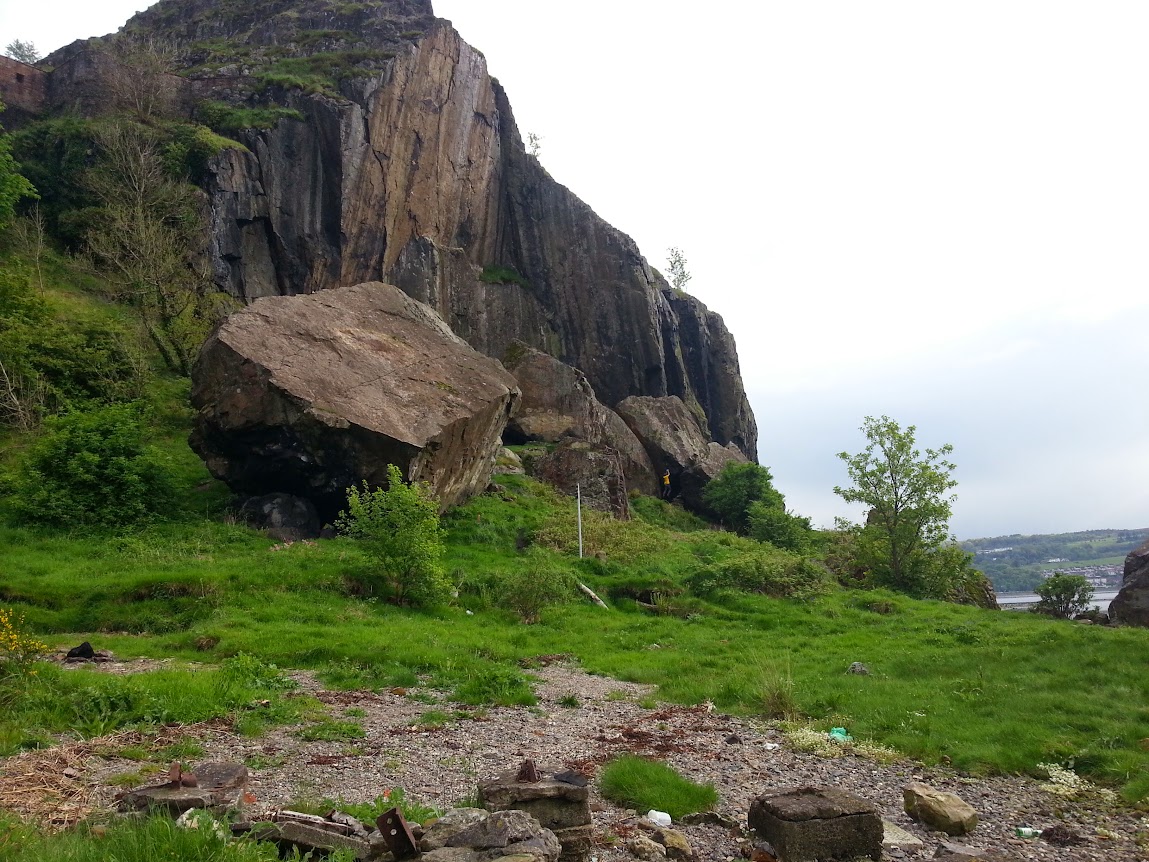I have been going on for years about Dumbarton Rock being one of our finest examples of modern 'sporting heritage', a kind of living history and an example of community 'ownership' (I use this in the least possessive sense) through simple occupation and use, under the shadow of more static heritage that is purely conservatory (I mean no disrespect to Historic Scotland and the castle!). It's how we create identity after all and is part of the greater weave of history, but seen from the ground-up and the everyday, which is an approach that is gradually displacing the top-down perspective of traditional historiography.
One of the most exciting projects around is a community-history project with the acronym ACCORD, which stands for Archaeology Community Co-Production of Research Data.
What does this mean? Well, for climbers, it means we are gathering a group in early July to photograph the boulders and maybe the crag, with loaned equipment and cameras, to create a 3D collage of all the blocs. When the processing is complete, along with interviews, written material and interpretation, we'll have a full archaeology of our climbing heritage.
We'll also have Creative Commons rights to use the material, imagine a 3D topo! Better still, we'll be able to plug the data into 3D printers and print out our very own Eagle Bloc. Not a bad paperweight to have on your desk at work!
If you want to join in, the dates are from July 7th to 10th, give me an email if you want to know more >>> John Watson
Learn more about the project here >>>
Learn more about the project here >>>
ACCORD is one of eleven projects across the UK to be awarded funding from the Arts and Humanities Research Council’s £4million “Digital Transformations in Community Research Co-Production” programme. Led by the Digital Design Studio of the Glasgow School of Art, the project it is being delivered in partnership with the University of Manchester Department of Archaeology, Archaeology Scotland and the Royal Commission on the Ancient and Historical Monuments of Scotland. The ACCORD project seeks to examine the opportunities and implications of digital visualisation technologies for community engagement and research through the co-creation of three-dimensional (3D) models of historic monuments and places. Despite their increasing accessibility, techniques such as laser scanning, 3D modelling and 3D printing have remained firmly in the domain of heritage specialists. Expert forms of knowledge and/or professional priorities frame the use of digital visualisation technologies, and forms of community-based social value are rarely addressed. Consequently, the resulting digital objects fail to engage communities as a means of researching and representing their heritage, despite the now widespread recognition of the importance of community engagement and social value in the heritage sector.
